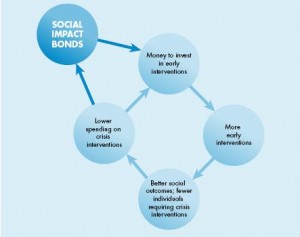Below is an article that originally appeared in the print version of the Spring 2013 paper:
A recent statistic from the National Center on Family Homelessness reveals that one in every 50 American children is homeless–equating to roughly 1.5 million children. While the effort to confront the issue has been taken up by many organizations, annual national numbers reflect the ongoing severity of family homelessness.
Family homelessness became a serious problem in this country in the mid-1980’s, due to large cutbacks in Federal investment in housing under Reagan. Prior to this, the United States last saw very high numbers of family homelessness during the Great Depression, which was remedied by the increase of employment at the start of WWII. Since the 80’s, the problem has worsened, as various natural disasters, such as Hurricane Katrina–which displaced 1.5 million people 16 years and older– have left families and children without a place to call home. Worse yet, support for those affected by these disasters is often greatly diminished by the onset of each new natural disaster.
The economic recession of 2007 also worsened the issue as more than six million families were foreclosed on, according to the Center for Responsible Lending. National data shows that family homelessness has been on the rise over the past six years. In 2006 the number was 1.5 million and as of 2010 it is 1.6 million, according to a report released by the National Center on Family Homelessness.
Why does homelessness among such a vulnerable group continue to persist? An influential report titled “America’s Youngest Outcasts 2010”, compiled by the National Center on Family Homelessness, concludes that the causes are structural in nature: “Poverty combined with our nation’s lack of affordable housing have pushed the most vulnerable families out of stable housing onto a path towards homelessness.” Psychological and emotional trauma among young mothers, natural disasters, and man-made disasters such as the economic recession of 2007, are also said to have a very damaging effect on families. According to the report, the 2007 recession was responsible for a 38% increase in childhood homelessness.
In New Jersey and Mercer County, however, the number of homeless youths and their families has been decreasing. The “America’s Youngest Outcasts” report establishes a “state report card” system which ranks the 50 states based on their success in tackling the issue of family homelessness–1 being the best, 50 the worst. This state report card system takes into account factors like the extent of childhood homelessness, child well being, risk for childhood homelessness, and policy and planning efforts. As of 2010, New Jersey was given a composite score of 7. The top 5 states tackling the issue are Vermont, Minnesota, Nebraska, North Dakota, and Maine.
On a more local level, the Mercer County Alliance to End Homelessnesshas been making significant progress in reducing the number of homeless families. By working closely with The Mercer County Board of Social Services (MCBOSS), the Alliance has seen the length of time that families spend in shelter or transitional housing decrease by 20 percent in a two-year period, and the number of families in hotels decrease by 66 percent over the course of a month.
This significant progress was achieved through a pilot rapid-rehousing program, which was in part funded by a grant from the U.S. Department of Housing and Urban Development. Rapid Rehousing offers rental assistance and experienced case managers, who help the head of household return to full employment and overcome any barriers that stand in the way. Re-housed families were 3.5 times more likely to be employed at the end of the program, as compared to those in transitional housing.
Though the national figures for family homelessness are on the rise, great strides are being made at a local county and state level. With new approaches to alleviating the problem and the rollout of rapid housing, the future for homeless families seems far more promising.
Article written by Steven P. Rodriguez
